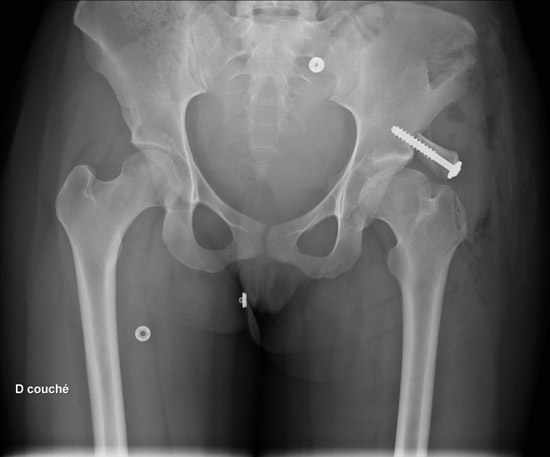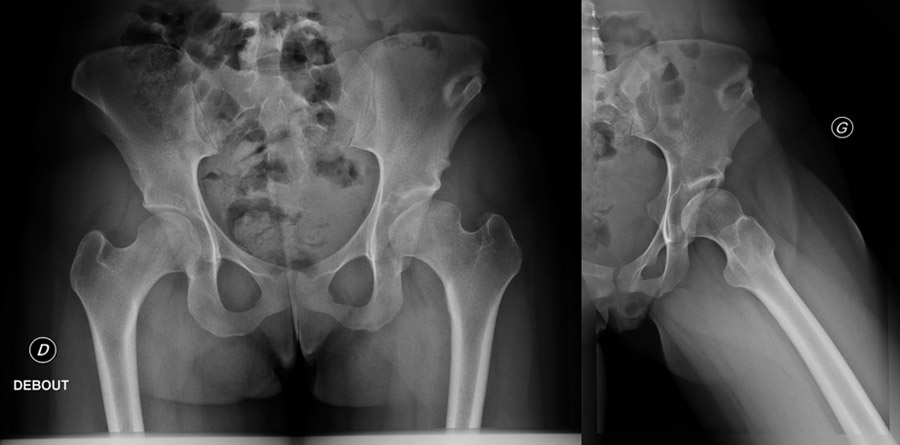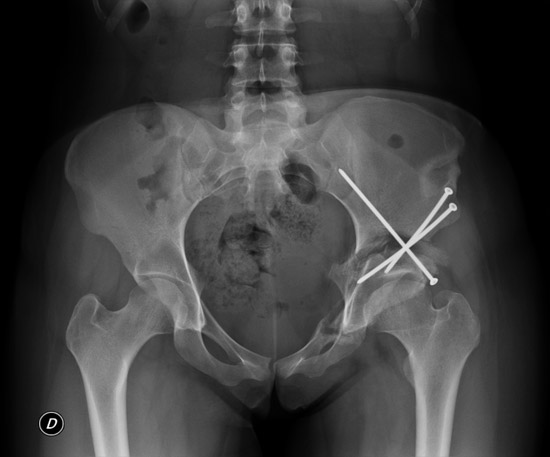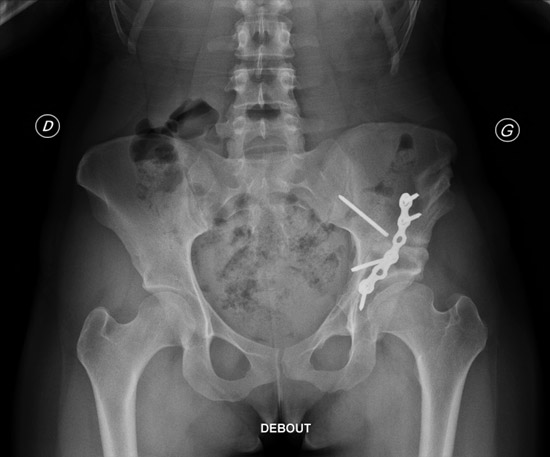A 24-year-old female patient presents with hip pain. Pre-op X-rays reveal total lysis of the shelf: What causes the patient's symptoms and how would you manage this condition?
- 24 Y.O. female
- Index surgery: a hip shelf acetabuloplasty was done 5 years ago because of disabling pains during sports activities. The screw was removed 4 years ago because of inconvenience but she reported no pain at the time.

- Her complaint is now pain despite a complete range of motion
- On physical examination, she presents with positive FADIR and FABER tests.

What are the causes of the patient’s symptoms?
- Hip dysplasia ✔️
- Coxa plana due to a Legg-Calve-Perthes disease ✔️
Was the index surgery a good option?
- Yes, it has been shown to be a surgery with good results1 ✔️
How would you manage this condition?
- Peri-Acetabular Osteotomy ✔️
« Modern total hip replacement remains an excellent option for the more arthritic joints »2,3
What are the indications for PAO4?
- Acetabular retroversion and anterior over-coverage ✔️
- Lateral centre edge angle (LCEA) < 22°✔️
- Acetabular index: >14°✔️
- Extrusion index: >27%✔️

Unfortunately, the patient presented with a non-union of the peri-acetabular osteotomy. A good consolidation was obtained with iliac bone autograft.
The patient is now free of pain with a complete range of motion.

- 1 Terjesen T. Residual hip dysplasia: is there a place for hip shelf operation? J Child Orthop. 2018 Aug 1;12(4):358-363. doi: 10.1302/1863-2548.12.180042. PMID: 30154926; PMCID: PMC6090190.
- 2 Gala L, Clohisy JC, Beaulé PE. Hip Dysplasia in the Young Adult. J Bone Joint Surg Am. 2016 Jan 6;98(1):63-73. doi: 10.2106/JBJS.O.00109. PMID: 26738905.
- 3 Kim CH, Kim JW. Periacetabular osteotomy vs. total hip arthroplasty in young active patients with dysplastic hip: Systematic review and meta-analysis. Orthop Traumatol Surg Res. 2020 Dec;106(8):1545-1551. doi: 10.1016/j.otsr.2020.08.012. Epub 2020 Nov 12. PMID: 33189660.
- 4 Ahmad SS, Haertlé M, Konrads C, Derksen A, Windhagen H, Wirries N. The Scientific Evolution of Periacetabular Osteotomy: A Global Review. J Clin Med. 2022 Oct 17;11(20):6099. doi: 10.3390/jcm11206099. PMID: 36294420; PMCID: PMC9604972.

